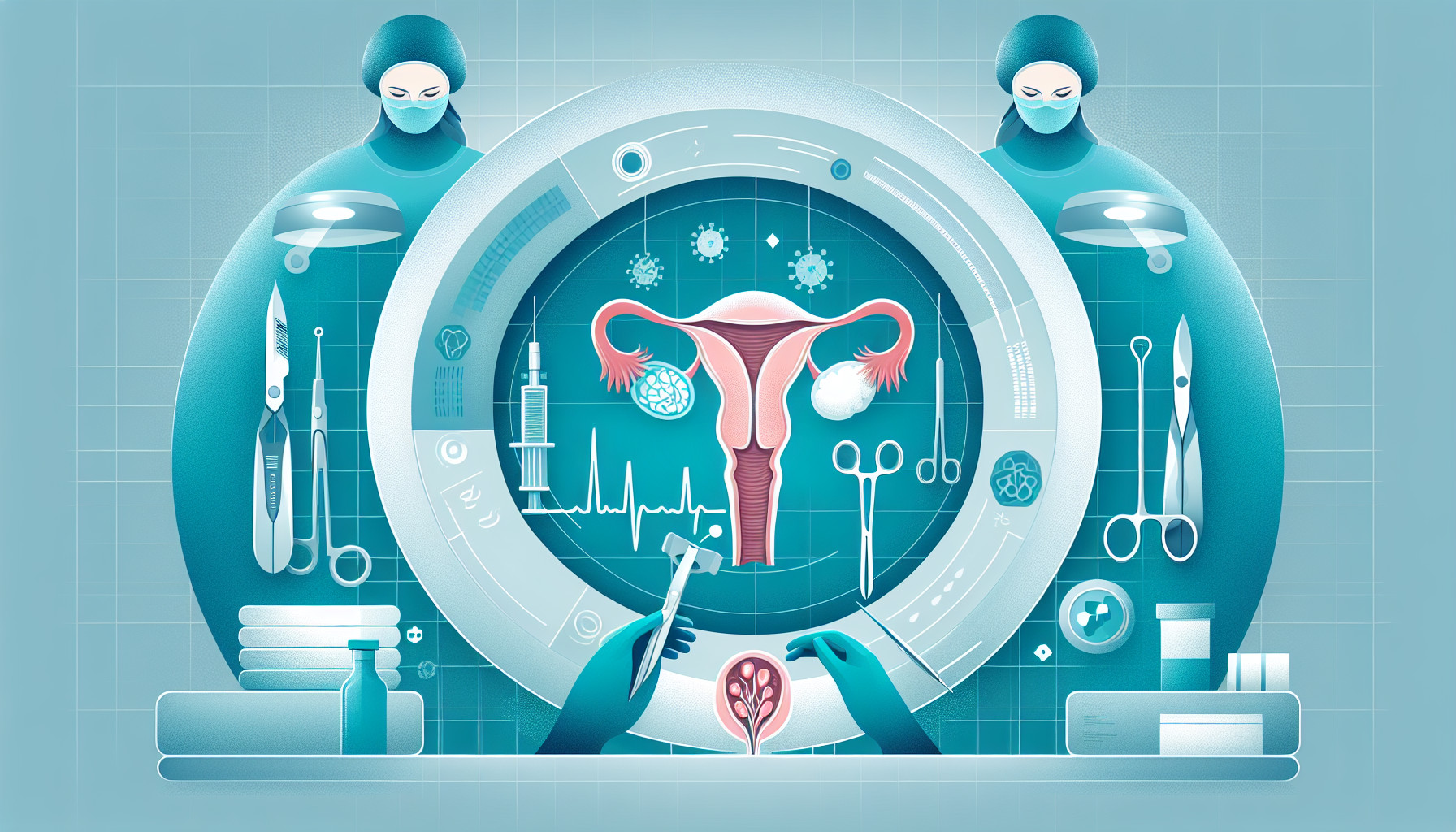Our Summary
This research paper discusses a very rare medical case where a 41-year-old woman had two different types of cysts in her ovaries at the same time – a dermoid cyst in her left ovary and an endometrioma in her right ovary. These cysts were causing her pelvic pain and were detected using magnetic resonance imaging (MRI), as they were not clearly seen in an ultrasound. To treat these, she underwent a laparoscopic cystectomy, a minimally invasive surgery to remove the cysts from her ovaries. The surgery was successful, and the patient did not experience any complications. This case emphasizes the importance of efficiently removing both types of cysts when they occur together.
FAQs
- What types of cysts did the 41-year-old woman have in her ovaries?
- What type of imaging was used to detect the cysts that weren’t clearly seen in an ultrasound?
- What type of surgery did the patient undergo to remove the cysts from her ovaries?
Doctor’s Tip
After ovarian cyst removal, it is important to follow your doctor’s post-operative instructions carefully to ensure proper healing. This may include avoiding heavy lifting, taking prescribed pain medications, and monitoring for any signs of infection. It is also important to attend follow-up appointments to monitor your recovery progress and ensure that the cysts do not return. Remember to communicate any concerns or new symptoms to your doctor promptly.
Suitable For
Ovarian cyst removal is typically recommended for patients who have large cysts that are causing symptoms such as pelvic pain, bloating, and difficulty with bowel movements or urination. Other reasons for recommending ovarian cyst removal include:
Persistence or enlargement of the cyst: If a cyst does not go away on its own or continues to grow larger, surgery may be recommended to prevent complications such as rupture or torsion.
Suspicion of malignancy: If there is concern that a cyst may be cancerous, surgery may be necessary to remove the cyst and perform a biopsy to determine if it is cancerous.
Symptoms such as severe pain or pressure: If a cyst is causing severe pain or pressure in the pelvic area, surgery may be recommended to relieve these symptoms.
Infertility: Ovarian cysts can sometimes interfere with fertility, and surgery may be recommended to remove the cyst and improve the chances of conception.
Recurrent cysts: If a patient has a history of recurrent ovarian cysts, surgery may be recommended to prevent future cyst formation.
It is important for patients to discuss their individual case with their healthcare provider to determine if ovarian cyst removal is necessary and to weigh the risks and benefits of surgery.
Timeline
Before ovarian cyst removal:
- Patient experiences pelvic pain or discomfort, which may prompt them to seek medical attention.
- Patient undergoes imaging tests such as ultrasound or MRI to diagnose the presence of ovarian cysts.
- Once diagnosed, the patient may undergo further tests to determine the type and size of the cysts.
- Treatment options are discussed with the patient, and a decision is made to proceed with ovarian cyst removal.
After ovarian cyst removal:
- Patient undergoes laparoscopic cystectomy surgery to remove the cysts from the ovaries.
- Recovery period post-surgery, which may include pain management and monitoring for any complications.
- Follow-up appointments with the healthcare provider to monitor healing and ensure no recurrence of cysts.
- Patient may experience relief from pelvic pain and other symptoms associated with the ovarian cysts.
- Patient may be advised on lifestyle changes or medication to prevent future cyst formation or complications.
What to Ask Your Doctor
What type of ovarian cyst do I have and what are the risks associated with it?
Why is surgery necessary to remove the cyst?
What are the potential complications of the surgery?
What is the success rate of the surgery for removing ovarian cysts?
How long is the recovery time after the surgery?
Will I still be able to have children after the cyst removal surgery?
Are there any alternative treatments to surgery for removing ovarian cysts?
How often do ovarian cysts typically recur after surgery?
Will I need any follow-up appointments or tests after the surgery?
Are there any lifestyle changes I should make to prevent future ovarian cysts?
Reference
Authors: Shero N, Kim DS. Journal: Case Rep Womens Health. 2022 Nov 11;36:e00466. doi: 10.1016/j.crwh.2022.e00466. eCollection 2022 Oct. PMID: 36406177
